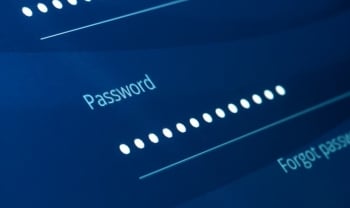No summer scares: 5 tips on how to keep your business cybersecure

Guiding employees' digital behaviors is key to avoiding potential cybersecurity breaches. However, remote work during summer weeks may disrupt normal routines and change the location of digital assets, leaving companies open to vulnerabilities.
According to our latest Internet Security Report, malware detections on endpoints increased by more than 75% during the first months of the year. This alarming figure is set to rise further during the summer telecommuting season when office security infrastructure often remains insufficient to protect teleworking devices and work habits change.
This type of behavior can seriously compromise corporate security. Organizations need to take specific cybersecurity measures to ensure there are no scares this summer.
A cyberattack-free summer: how to get it right
Summer is a time for rest. And you don’t want a cyberattack to ruin those weeks off, which is why we’re sharing some tips on how to avoid scares over the long vacation:
-
Switch off everything that won’t be used during the summer:
This is a simple but crucial step to ensure a cyberattack-free summer. Turn off any devices not in use while the office is closed. Although keeping devices on is a common practice, doing so leaves them exposed to potential cyber threats. Switching them off reduces the online connection and minimizes the risk of unauthorized access. That said, this obviously does not apply to the critical enterprise services that provide services to your customers and other employees through the summer and vacations.
-
Install patches and updates:
Keeping outdated software in a company significantly increases the risk of a cyberattack. Before leaving the office to start remote working or going on vacation, ensure that local software is updated in advance to mitigate any risks. IT teams must also check they have applied all the necessary patches, as a patched infrastructure and effective management reduce the risk of an attack occurring.
-
Design contingency plans:
Implementing robust contingency and incident response plans is key to responding to threats effectively and mitigating the consequences. This involves having an incident response policy and procedure, which includes waterfalling on-call lists to provide alternative responder options when certain members are on vacation and establishing clear communication channels and response procedures for different types of incidents. You also need to identify the resources needed, check availability, and define the roles of the teams responsible for managing this type of emergency. A pre-outlined action plan greatly speeds up response and diminishes the impact of an attack on an organization.
-
Opt for simplified security platforms:
By prioritizing the adoption of robust yet simple solutions, companies can establish a comprehensive defense mechanism. More specifically, a “platform” based solution that consolidates many security controls together greatly decreases the complexity and time required to manage the many security controls organizations need. Reducing complexities can increase employee compliance with security protocols, lowering the likelihood of human error and unauthorized access.
-
Implement multi-factor authentication (MFA):
This solution establishes an effective barrier to prevent unauthorized access to the network, even ensuring that threat actors won’t be able to automatically log in even in the event of a password leak or attack. With MFA, users are required to verify their identity via two different formats. This adds an additional layer of security, preventing unauthorized access to the network. This is a key tool for protecting remote employee devices in the event of threats such as phishing or credential theft.
-
Rely on an MSP:
Outsourcing some or all security to managed service and managed security service providers (MSP/MSSP) is a fantastic strategy for all your IT or operations teams to focus on your organization’s business all year long. During the summer, often fewer professionals share responsibility because of thrir vacation leave. Although this may seem harmless, it can have an impact on cybersecurity. This is where an MSP or MSSP can supply even more crucial support for internal IT teams. MSPs ensure 24/7 proactive monitoring and maintenance of IT systems. This decreases disruptions and enhances the productivity of security tasks, which elevates protection for companies. If you do not have security resources of your own, we recommend MSP/MSSPs all year round, but even if you have some internal expertise, they can still help you maintain security during summer holidays and vacations.
Cybercriminals do not go on vacation, which means implementing an effective cybersecurity protocol that shields all aspects of your company, from software to employee devices, is key to preventing attacks.
If you would like to find out more about the basics of protecting companies in times of remote working, consult the following posts on our blog:


